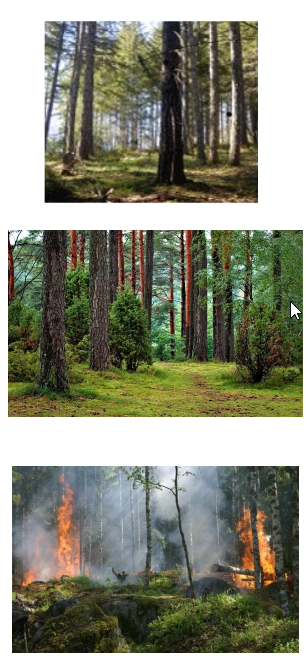In Cap-and-Trade Considerations, Oregon Policy-Makers Should Include Reductions for Federal Forest Fire Smoke Carbon Emissions
Sara Duncan
503-586-1246
Oregon Forest & Industries Council
On Wednesday, August 22, hundreds of policymakers will gather in Lincoln City for the annual Oregon Coastal Caucus Economic Summit to discuss carbon cap-and-trade mechanisms and ways to reduce Oregon’s carbon footprint.
“Solutions to decrease unchecked wildfires and increase the production of sustainable wood products in our federal forests must be part of the dialogue of Oregon’s cap-and-trade program,” said Kristina McNitt, Oregon Forest & Industries Council President. “Rampant megafires in federal forests have catastrophic consequences for our safety, health, communities, and economy. Private forestland owners already contribute sizable solutions to climate change by managing forests for fire resiliency and sustainably producing renewable wood products that store carbon for the entire life of the product. Federal forests should do the same.”
Last summer, more than 7,600 people were evacuated from their homes. Oregonians suffered unhealthy air quality and emergency-room visits spiked. The cancellations of Oregon Shakespeare Festival performances, the Sisters Folk Festival, and Cycle Oregon cost our state millions in tourism dollars.
Of the more than 700,000 acres that burned in Oregon last fire season – roughly the size of Rhode Island – an equal number of fires started in federal and private forests, but about 96 percent of the acres burned were in federal forests. This summer, over 210,000 timbered acres have already burned – an area larger than Portland, Eugene and Seattle combined – and roughly 90 percent is in federal forests. Since 2008, nearly 80 percent of burned acres in Oregon were in federal forests.
“There’s a better way to do this,” said Jim James, Executive Director for the Oregon Small Woodlands Association. “Oregon policy-makers can do something to improve the health and economic vitality of all Oregonians, reduce forest fires, and mitigate climate change: take the position of the International Panel on Climate Change and encourage the use of Oregon-grown wood from federal forests.”
In 2007 and 2008, the International Panel on Climate Change concluded that in “the long term, a sustainable forest management strategy aimed at maintaining or increasing forest carbon stocks, while producing an annual sustained yield of timber, fiber or energy from the forest, will generate the largest sustained mitigation benefit.”
Of the roughly 30 million acres of forestland in Oregon, about 60 percent of it is federally-owned, and roughly 34 percent of it is privately owned (the remainder is tribal and state land). Conversely, 75 percent of Oregon’s timber harvest comes from that private forestland (and only 15 percent from federal land), making Oregon the number one producer of softwood lumber and plywood in the U.S. Producing renewable, environmentally-friendly products helps the planet: trees literally use sunlight to capture carbon dioxide (a primary greenhouse gas) from the air and turn it into sustainable building products.
In 1971, Oregon pioneered forest regulations and today observes some of the strictest environmental protections in the nation, including mandatory reforestation after harvest. For every tree that is harvested in Oregon, four are planted in its place. Notably, reforestation after fire is not required, but nearly all private forests are rehabilitated after fire and replanted. Federal forests mostly remain charred.
“When our forests go up in flames, decades of carbon sequestration and storage goes with it,” said McNitt. “We can either breathe that carbon into our lungs as smoke, or we can store that carbon in renewable, sustainable wood products and plant trees to re-start that carbon cycle. We encourage our policy-makers to support wood products to meet Oregon’s climate goals.”

The Oregon Forest & Industries Council is a trade association representing more than 50 Oregon forestland owners and forest products manufacturers. Our members combine sustainable forest management practices with the latest science and technology to continuously improve the environmental, social and economic value of healthy working forests. We protect and manage more than 5 million acres of Oregon forestlands, employ nearly 60,000 Oregonians, and make Oregon the nation’s largest state producer of softwood and plywood. For more information, go to ofic.com.
The Oregon Small Woodlands Association is a member-based association that represents over 3000 small woodland owners in Oregon. For over 50 years OSWA has helped to serve needs unique to small woodland owners. OSWA focuses on fostering peer-to-peer communication between landowners, providing support for legislative and regulatory challenges, and cultivating partnerships to address and solve common problems. For more information, visit oswa.org


Advertisement